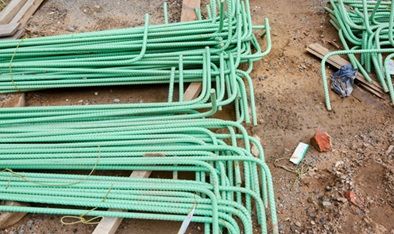Construction Blueprint 2 – Open call to update the EU Skills observatory


On 25 November, the European Commission is expected to adopt a legislative proposal of significant relevance to the construction sector. This initiative, titled the Industrial Accelerator Act (formerly known as the Industrial Decarbonisation Accelerator Act or IDAA), aims to establish lead markets for the development of low-carbon industrial products. Labelling schemes for “green” steel and cement are among the instruments of this initiative.
The construction sector absorbs nearly 40% of the total steel produced in Europe, making it by far the largest customer of steel manufacturers. However, it is important to highlight that contractors predominantly source steel from the secondary route (e.g. rebar, wire rod), which offers clear advantages in terms of carbon emissions and circularity.
Early in October, a specific labelling initiative for “green” steel was presented to EU policymakers and other stakeholders. The European Commission, which is currently finalising the legislative proposal, expressed support for this label. FIEC has serious concerns for several reasons. Firstly, the label appears to be not legally compatible with existing legislation, notably the Construction Products Regulation (CPR), as well as Environmental Product Declarations (EPDs) and Declarations of Performance and Conformity (DoPCs).
Furthermore, it was observed that secondary steel manufacturers withdrew and are no longer involved in this specific initiative. The labelling methodology seems to place secondary steel production at a disadvantage. As a result, only limited volumes of certified European rebar will be available to contractors operating on the European market. This represents a serious obstacle to the dynamics of the construction market, particularly if such labels are introduced as mandatory non-price criteria in public procurement (cf. Green Public Procurement).
Moreover, we wish to emphasise that simplified labelling schemes for industrial materials in construction are neither effective nor helpful. Unlike consumer products, construction materials are procured in large volumes by experienced professionals. Procurement teams already rely on detailed technical documentation, standards, and performance specifications, including environmental criteria defined by the CPR. Life-cycle Global Warming Potential (LC GWP) thresholds for new buildings already require contractors to undertake comprehensive life-cycle assessments, incorporating science-based calculations of embodied carbon with clear reduction targets. Any “green” label adds further complexity to this process and undermines the very decarbonisation goal if criteria other than the carbon intensity are used to determine the emission class on the label scale.
FIEC addressed the effectiveness of lead markets and “green” labelling in achieving decarbonisation targets as early as July in the FIEC Position Paper titled "Industrial Decarbonisation: Lead Markets and Labels for Low-Carbon Industrial Products in Construction".
Read more about this topic and explore FIEC's opinion at this link.

There are no upcoming events.